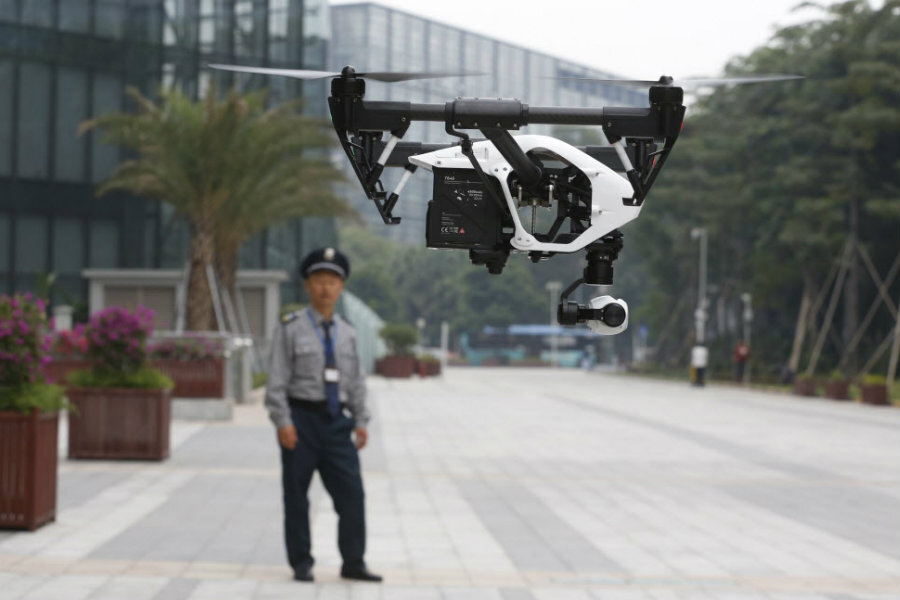Drones deliver tea in China: Is the US falling behind in the drone game?
Loading...
In China, drones are now delivering tea – for three days, anyway.
In a one-up of Amazon’s big drone announcement in 2013, online retail giant Alibaba has launched a test program that will deliver ginger tea via drones to 450 customers in Beijing, Shanghai, and Guangzhou from Feb. 4 to 6, according to Tech In Asia.
“Today, we find the answer to imagination,” reads the translated press release on Alibaba’s Taobao service, which is piloting the program in partnership with logistics firm YTO Express. “We want to try something never tried before.”
The company promises one-hour delivery of tea packages weighing less than 340 grams or about ¾ of a pound to customers, who can order on a first-come, first-serve basis.
It’s a “teeny, tiny pilot program” that isn’t even the first to test drone delivery in China, TechCrunch reported. But with the United States still awaiting definitive regulations on commercial drone use from the Federal Aviation Administration, even small-scale programs like Alibaba’s could put China and other countries with looser rules ahead of the US in the drone game.
As The Christian Science Monitor reported:
The FAA has been infamously slow in rolling out commercial drone regulations. In 2012, Congress mandated the FAA to create such regulations by September 2015. In a hearing with House Committee on Transportation and Infrastructure Thursday [Dec. 4, 2014], the FAA said proposed regulations could be released this month, but regulations for drones weighing more than 55 lbs. might not be ready until 2017.
Meanwhile, delivery by drone is taking off, so to speak.
The University of Sydney has been using a drone delivery service for textbook rentals since spring last year. The northern Russian city of Syktyvkar launched an unmanned pizza delivery service in July.
A Silicon Valley startup has also begun testing the automated delivery of antibiotics to remote clinics and hospitals in Bhutan’s mountain communities; Doctors Without Borders is doing the same in Papua New Guinea for saliva samples for tuberculosis testing. Both countries are gunning for a 2015 rollout.
Even the South American drug trade has been known to use drones to smuggle product: Late last month, a quadcopter carrying more than 6 lbs. of methamphetamine crashed close to the US border in Mexico.
Still, drone experts and aficionados in the US haven’t been sitting idle while the FAA decides on the rules.
A burrito place in Sunnyvale, Calif.; a dry cleaners in Philadelphia; a brewery in Mille Lacs Lake, Minn.; and a chicken wings restaurant in Milford, Conn. are among the businesses that have attempted to deliver their goods via remote control. Media outlets are trying to get in on the game as well: Early this year, CNN announced a partnership with Georgia Tech that allows the network to explore the use of camera-equipped drones to gather news.
"Our aim is to get beyond hobby-grade equipment and to establish what options are available and workable to produce high quality video journalism," said David Vigilante, CNN's senior vice president of legal.
The FAA, for its part, is making some progress on developing regulations. The agency issued eight more exemptions for the commercial use of small drones, Reuters reported Tuesday. But as long as definitive rules are lacking, experts say, innovation will be hindered by safety and privacy concerns.
“The current regulatory void has left American entrepreneurs and others either sitting on the sidelines or operating in the absence of appropriate safety guidelines,” read an April 8, 2014 letter to FAA administrator Michael Huerta, signed by 33 groups representing a variety of industries.
“[W]e highly encourage the FAA to allow similar programming … to establish appropriate standards for safe operation,” the letter continued. “Doing so will allow a portion of the promising commercial sector to begin operating safely and responsibly in the national airspace.”








